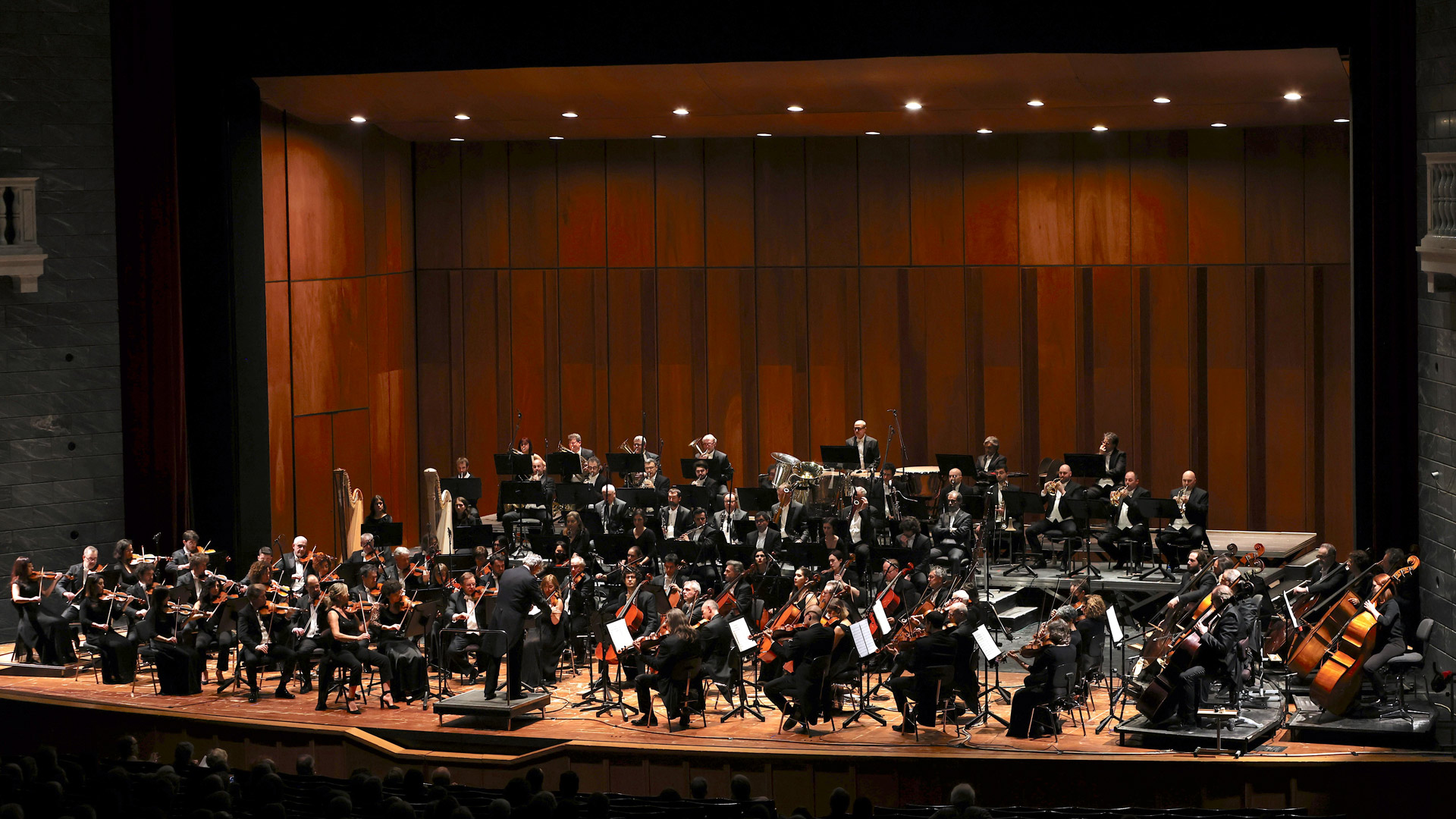A symphonic concert with music by Gioachino Rossini, Wolfgang Amadeus Mozart and Ludwig van Beethoven, a project realized by Fondazione Teatro Carlo Felice in collaboration with Comunità di Sant’Egidio.
Conducted by M° Dorian Wilson with the piano soloist Marco Vincenzi and the Opera Carlo Felice Genova Orchestra. Together with the musical pieces by Rossini and Mozart, Beethoven’s Symphony n. 7 particularly refers to the dimension of ballet. In fact, Wagner’s famous statement about such a music goes: «In self-awareness, wherever we enter the bold rhythm of this dance of spheres of human size. Such a symphony is the apotheosis of dance, it is dance itself in its most sublime essence».
GIOACHINO ROSSINI
Symphony from Il barbiere di Siviglia
WOLFGANG AMADEUS MOZART
Concert for piano and orchestra n. 27 in B flat major K 595
LUDWIG VAN BEETHOVEN
Symphony n. 7 in A major op. 92
Piano
Marco Vincenzi
Conductor
Dorian Wilson
Orchestra
Opera Carlo Felice Genova
Il barbiere di Siviglia represents one of the benchmarks of the Italian opera buffa tradition. Composed by Gioachino Rossini in just three weeks, the opera was soon appreciated in spite of the poor success of its premiere. As in the vast majority of the opening symphonies in Rossini’s operas Rossini, the one of Barbiere soon became quite popular in form of concert piece and it was then often performed separately. Actually, the first symphony of Barbiere performed during the show at Teatro Argentina in Roma on February 20, 1816 was replaced by another symhpony – eventually entered in the musical tradition – originally composed for the opera Aureliano in Palmira of 1813. The structure of the Symphony is similar to the other operas by Rossini, with a slow introduction followed by two themes of Allegro, without a proper development but focused on the lively melodic affirmation leading diretly to the final coda. The incredible sucess of such an opening Symphony is due to Rossini’s incredible talent in the creation of the ouverture: both versions of the composition – the original one as well as the symphonic execution – immediately catch the listener’s attention.
The composition of the Concert for piano and orchestra K. 595 began around 1788 and ended in 1791, the year of Mozart’s death. The composition presents a reduced orchestra and duration also for performance needs, swinging between symphonic and chamber-music features. Such an aspect has a relevant role in the intimate character of the composition. The contrapuntal writing creates a sensitive balance in the dialogue between piano and orchestra, an interaction shaken by frequent passages from major to minor tonalities. On the one hand, piano constitutes an element of eloquent clarity; on the other one, the orchestra instills a more turmoiled and reflective atmosphere. The concet is formed by three movements: the Allegro in form of sonata, the Larghetto drawing on the form of Lied an the fial Allegro in form of rondò. It is evident a sense of continuity uniting the three movements, where the dialogue between the soloist and the other musicians remains uninterrupted. In every of the three movements melodic ideas of great inspiration bloom. In the Larghetto, Mozart presents as central theme a melody from Fidelity Rewarded by J. Haydn, widening every emotional structure; in the final Allegro, the composer drwas on an external theme, a Lied contemprary to the Concert K. 595: Sehnsucht nach dem Frühling (Longing for Spring).
Beethoven’s Seventh Symphony was written in 1811-12 and was performed for the first time in December 1813. Since its first execution, its revolutionary character was quite clear. While the audience acclaimed it (particularly the second movement, the Allegretto), the critics rearked how the composition was so out of line that a drunk or madman could have composed it. The rhythmic element is the main point of the composition where all canonic schemes are overthrown. The intense rhytmycal pace of the Vivace in the first movement leads the listening, more than the sonata form itself; it is the unstoppable pulse to determine the tragic character of the second movement, the Allegretto, replacing a more traditional Andante; finally, it is still rhythm to accompany the listener to through the Presto and Allegro with a dancing liveliness. Rhythm creates the Wagnerian association between the Seventh and ballet that is so rooted in the collective imagination. Wagner wrote: «In self-awareness, everywhere we approach the bold rhythm of such a dancing, man-sized spheres. Such a symphony is the apotheosis of dance itself, in its most sublime essence, where the action of the body is translated into sounds we could think of as ideal». Beethoven associates the dense, intense saturation of the orchestral composition, rich in accentuated contrasts, to such a rhythmic protagonism. A clear example is represented by the final chord of the first movement in A major, followed by firm initial chord in A minor, an unprecedented passage outlining the total absence of mediation.
Ludovica Gelpi
